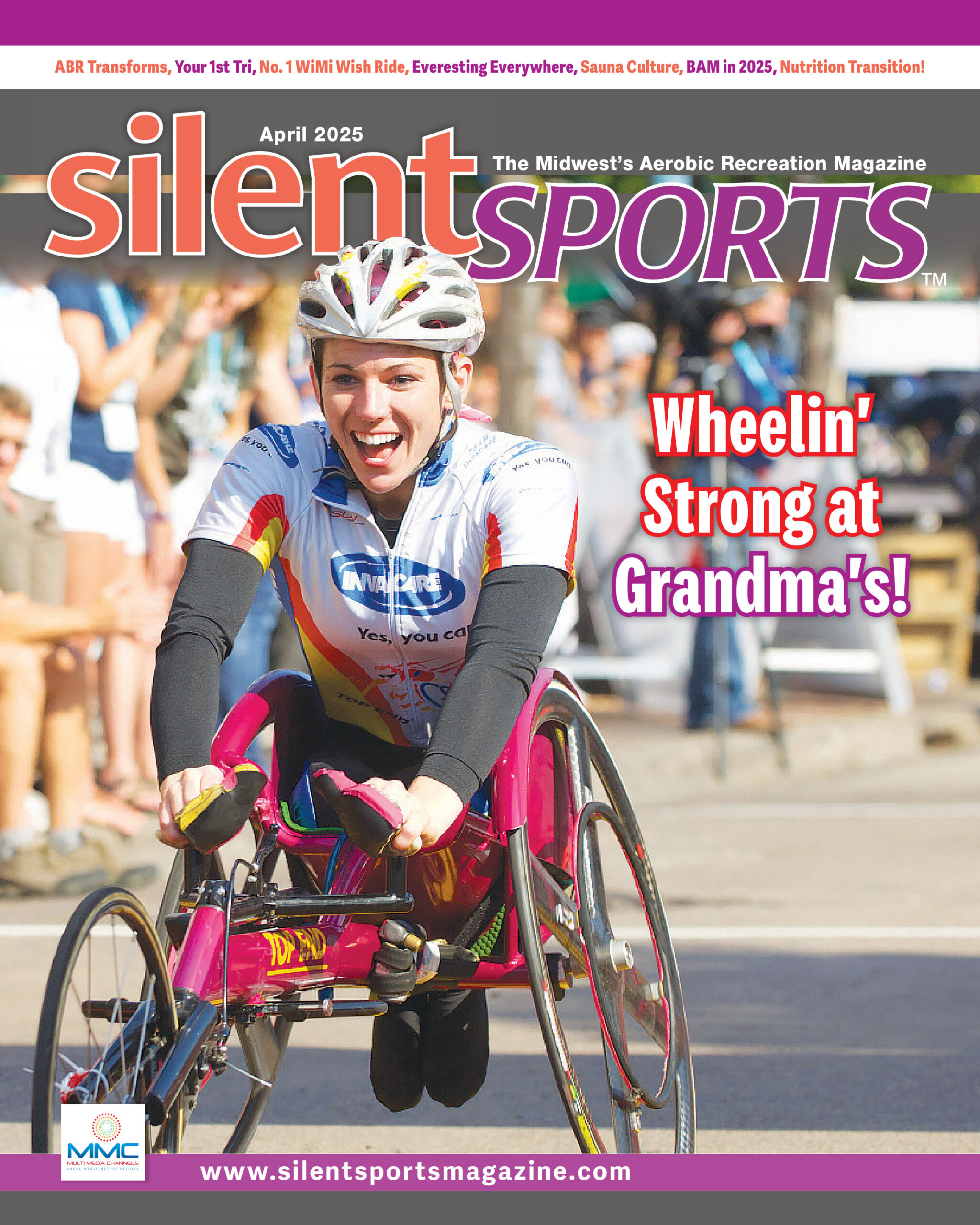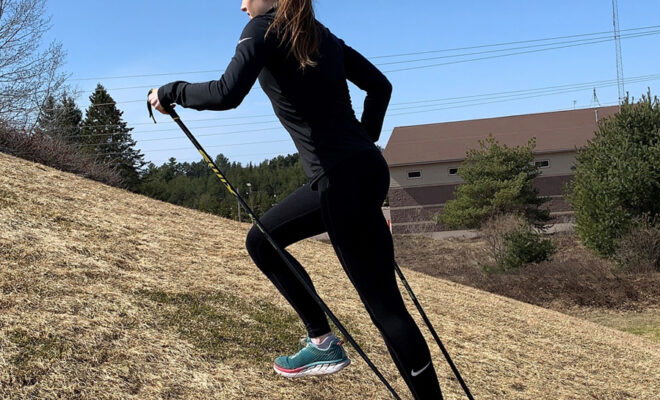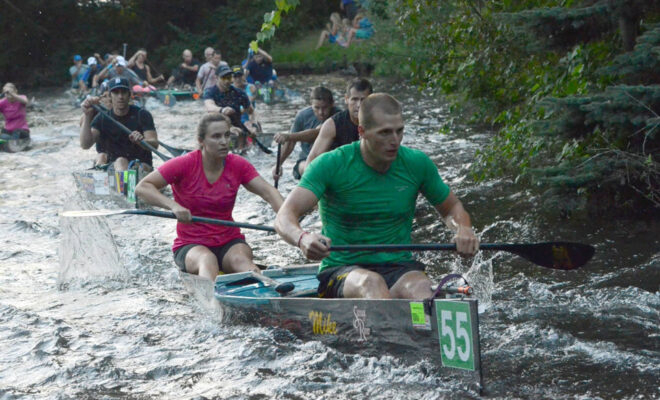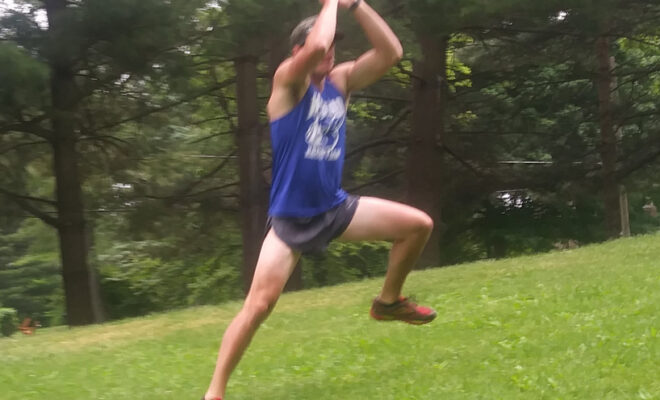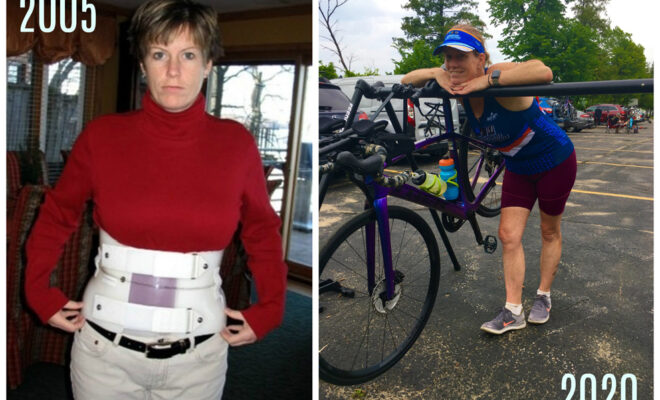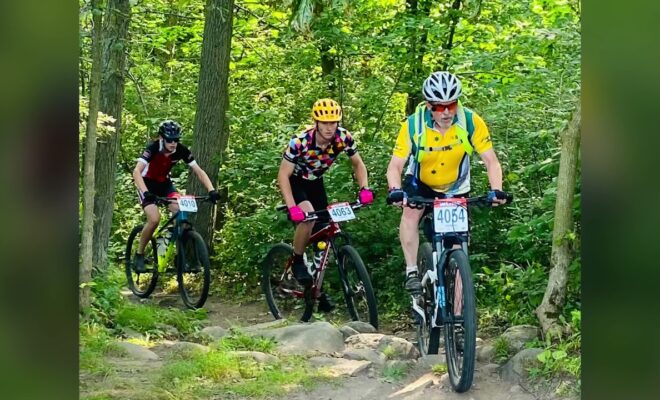Fast After Fifty, and Beyond
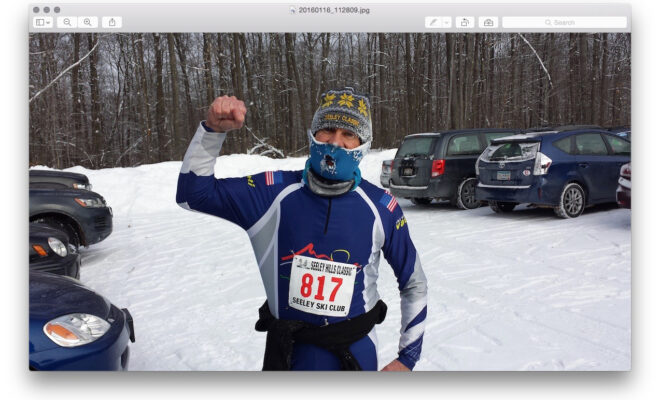
Fast After Fifty, and Beyond
By Phil Mahoney
Editor’s note: Living near Stevens Point, WI, Phil Mahoney, 73-years-young, had these sample race results in winter 2020: 70th out of nearly 1,200 Korte skiers, 2d at the Wolf Tracks Rendezvous 24K, and 20th overall at the Great Bear 25K, all classic technique, skiing serious speed for a twenty-something. What follows is his general approach to dryland training for the more mature skier, and tips for all ages.
By the time this article goes to publication, it will be prime time to work on your fitness and cross-country skiing skills for next ski season. It’s not possible to show all the details in one article, but my aim here is to motivate, provide basic program structure, and leave you with a list of good resources to add to these basics.
When I started skiing in 1969, I had a fairly good understanding of the need for a strong cardiovascular base. I ran track in high school and cross-country in college. Also, I made a point to follow all the track and field news, including competitions, specific athletes, and, especially, training methods.
Training principles developed by Arthur Lydiard, the legendary New Zealand coach, made sense to me. His basic formula was 80 percent distance work, 20 percent speed work. To simplify: a lot more aerobic work as a base, and a limited but important amount of anaerobic work. With some modifications, this approach is utilized today in running and other endurance sports. While spending a year teaching in New Zealand in 1973, I was fortune enough to talk with Lydiard as well as join him in a 14-mile run into the hills surrounding Palmerston North. He was there to talk with and inspire the local cross-country team.

Phil: My hunch is that this was around ’95 or ’96. I decided to classic ski the full Birkie even though all the top skiers had transitioned to skate and there was no recognition for someone who classic skied it. In the results, I was placed in with everyone else so I was at least 100 skiers back from where I would have finished if I skated. My goal was to hopefully be the 1st one to finish it with classic technique. I made a special effort to clearly stride down Main St. and the crowd loved it and everyone yelled out that I was the 1st classic skier to come through. It was one of my most memorable Birkies.
Nordic skiing, like running, requires a strong aerobic base plus a lot more. Unlike running, Nordic skiing is dependent on overall strength as well as specialized technical skills that further rely on balance and agility. These factors apply to all skiers, not just the AARP-and-beyond ones.
With aging, athletes gradually lose muscle mass and flexibility even if we do everything right. The key is to keep at it to minimize the loss. I insist, however, that the process can be as enjoyable as the hoped-for results.
The role of basic aerobic capacity is well-known, and we can work on that during summer and fall with long runs, bike rides, and roller skiing. Strength training for Nordic skiing includes both general training and specialized work tailored to the sport. Generalized training focuses on our major muscle groups, including arms, shoulders, trunk (core), glutei, quads, hamstrings, and lower legs. Ways to approach general strength training include floor exercises such as pushups, focused abdominal strengthening, squat thrusts (burpees), weightlifting, and body resistance devices (bands and TRX, as examples). Specific strength can be attained by roller skiing, especially uphill double poling, hill bounding with poles, and training machines such as the Ski Erg.
In both skate and classic techniques, balance is required for fast and efficient skiing, and critical during the glide phase for maintaining speed and conserving energy. As a runner transitioning into skiing, I believe balance was probably my greatest challenge. Even now, I cannot say I’ve truly mastered it.
Agility is another important aspect of our sport. Some people are fortunate to possess agility inherently, while the rest of us need to work at it. I coach some of our middle school team kids in the summer with an emphasis on being comfortable on their skis (roller skis, of course). Last year, we started incorporating agility drills. In the end, it benefitted me as much as them. I plan to expand on this aspect of skiing this summer.
As to further references, CXC (cxcskiing.org) is an excellent Midwest resource with information and training camps in Wisconsin, Minnesota, and Illinois. Andy Newell, a former U.S. Ski Team member, recently started Nordic Team Solutions (nordicteamsolutions.com) for help with all aspects of training and technique. I’d recommend viewing Andy’s online site to see what he has to offer. There are some free intro videos to whet your appetite.
Last, a bit of motivation. As Nordic skiers, we already have an active and healthy lifestyle. However, aging happens. If we don’t work on strength, flexibility, balance, and agility, the decline will be faster. Being in a training group with other skiers certainly helps to keep things going. I work in a few group bike-rides with older riders, in addition to my normal summer riding, and I always look forward to them. Also, as a middle school coach, I get to do some summer workouts with a bunch of speedy youngsters once a week.
The older and the younger, working together and listening to each other. The best of both worlds.
Seeley Hills Classic several yrs ago. It was -8*F at the start and a balmy -5*F at the finish! ??

